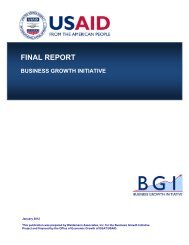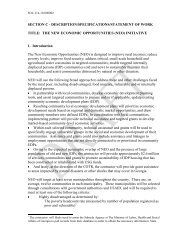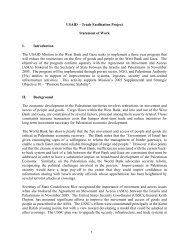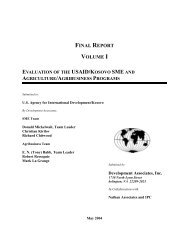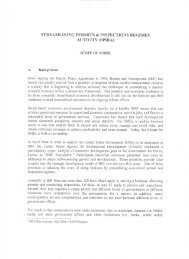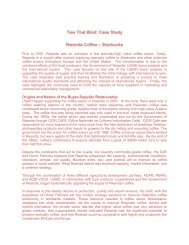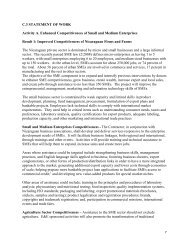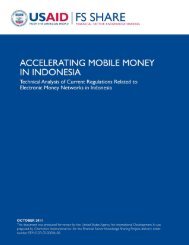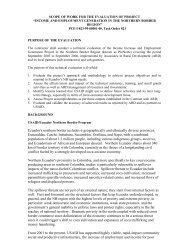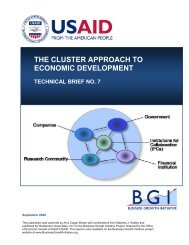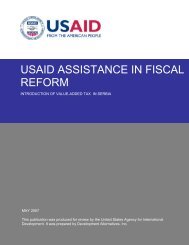Property Tax Reform in Developing and Transition Countries
Property Tax Reform in Developing and Transition Countries
Property Tax Reform in Developing and Transition Countries
Create successful ePaper yourself
Turn your PDF publications into a flip-book with our unique Google optimized e-Paper software.
for the tax<strong>in</strong>g authority to adm<strong>in</strong>ister.<br />
A second step is to be clear about the way <strong>in</strong> which assessments will be made. This is especially<br />
important <strong>in</strong> develop<strong>in</strong>g <strong>and</strong> transition countries where evidence on values <strong>and</strong> valuation experience are<br />
limited. Every jurisdiction should have a manual that clearly specifies the way <strong>in</strong> which assessments are<br />
to be carried out, <strong>and</strong> that lays out an approach that will be acceptable to the courts.<br />
Still, a major constra<strong>in</strong>t to good valuation <strong>in</strong> develop<strong>in</strong>g countries is the shortage of qualified valuers<br />
work<strong>in</strong>g <strong>in</strong> the government sector. In some countries, the problem is the absence of good quality<br />
valuation tra<strong>in</strong><strong>in</strong>g <strong>and</strong> degree programs for valuers. Almost everywhere, the significant gap <strong>in</strong><br />
compensation of valuers between the public <strong>and</strong> private sectors is a major problem. In many develop<strong>in</strong>g<br />
countries, this lack of qualified valuers shows itself <strong>in</strong> poor assessment equity <strong>and</strong> long overdue<br />
revaluations. At a m<strong>in</strong>imum, capacity build<strong>in</strong>g programs should be put <strong>in</strong> place to address this problem.<br />
Given the paucity of qualified valuation staff <strong>and</strong> other deficiencies, there is a need for careful attention to<br />
the efficiency of the assessment process. If the law calls for valuation at market levels, or if the goal is a<br />
specified fractional assessment, then tests should be put <strong>in</strong> place to monitor the accuracy of these<br />
assessments. Specifically, a sales ratio study can be used to identify the average degree of<br />
underassessment across properties. 15 In develop<strong>in</strong>g countries, however, there usually are no reliable<br />
transaction values with which to compare assessments. Resort can (<strong>and</strong> should) be made to a panel of<br />
experts (realtors, mortgage bankers, real estate agents, etc.) or to valuation staff to make estimates of the<br />
average degree of underassessment.<br />
F<strong>in</strong>ally, there is the issue that underlies the valuation problem <strong>in</strong> most develop<strong>in</strong>g <strong>and</strong> transition countries:<br />
the absence of reliable data on the sales values of properties that are exchanged. Because many<br />
develop<strong>in</strong>g countries impose transfer taxes with high rates, there is significant <strong>in</strong>centive to understate<br />
values, <strong>and</strong> there is ample evidence that this understat<strong>in</strong>g does occur. This problem might be resolved by<br />
an effective program of challeng<strong>in</strong>g declared sales values, but this would be quite costly. Few stamp duty<br />
offices will take this on <strong>in</strong> more than a perfunctory way. 16 Another route would be to elim<strong>in</strong>ate property<br />
transfer taxes altogether, or to replace them with capital ga<strong>in</strong>s taxes on real property. This would at least<br />
remove the <strong>in</strong>centive for under-declaration, <strong>and</strong> <strong>in</strong> the case of a capital ga<strong>in</strong>s tax would provide a selfcheck<strong>in</strong>g<br />
mechanism for declarations.<br />
6.2.4 Collections, Enforcement <strong>and</strong> Appeals<br />
The revenue take from the property tax can be markedly enhanced by an effective collection/enforcement<br />
system. Various studies have measured the property tax collection ratio (collections as a percent of<br />
liability) <strong>and</strong> have shown a dismal record: Philipp<strong>in</strong>es – 50 percent (Guevara, 2004); Kenya – 60 percent<br />
(Kelly, 2000); Croatia – 70 percent; 17 Macedonia – 15 percent, Mumbai – 55 percent; <strong>and</strong>, Montenegro –<br />
43 percent. But <strong>in</strong> Lat<strong>in</strong> America, the collection rate is generally much higher. For <strong>in</strong>stance, <strong>in</strong> Colombia<br />
the overall collection rate is about 75 percent, while <strong>in</strong> Bogota it is 90 percent (De Cesare, 2004). 18<br />
15 A sales ratio study compares market sales values with assessed values for a sample of properties that sold dur<strong>in</strong>g<br />
the period <strong>in</strong> question.<br />
16 For a discussion of the method used to challenge declared values <strong>in</strong> Jamaica, see Bahl (2004).<br />
17 Refers to the tax levied on the use of urban l<strong>and</strong>.<br />
18 One must be careful about whether or not the collection rate is measured to <strong>in</strong>clude the collection <strong>and</strong> dem<strong>and</strong> for<br />
arrears.<br />
19



